|
Chorale Melodies used in Bach's Vocal Works
Nun freut euch, lieben Christen gmein (I/II) |
|
Melody & Text | Use of the CM by Bach | Use of the CM by other composers |
| |
|
Melody & Text: |
|
"Nun freut euch, lieben Christen g'mein" ((Dear Christians, one and all rejoice) is a Lutheran hymn, whose lyrics and melody were both written in 1523 by Martin Luther. It his based on Rom. 3: 28.
For his first song, Ein neues Lied wir heben an war, M. Luther was inspired by the Martyrium of the two Augustinian monks Hendrik Vos and Johannes van Esschen who had converted to the Reformation. Both had been executed at the stake in Brussels on July 1, 1523. M. Luther's song is a ballad-like narrative song and was not intended for church and worship, but for market and street. In hymnological research, it is certain that Nun freut euch, lieben Christen g’mein immediately followed the martyr song. Like this, it is a narrative song without a literary model, now referring to the supertemporal-temporal salvation act of God, and like this it is not a hymn, but a Reformation folk song, which was sung by traders, craftsmen and maids and a large share in the spread of the Reformation thought.
One of M. Luther's early hymns, it was published as one of eight songs in 1524 in the first Lutheran hymnal, the Achtliederbuch (Etlich' christliche Lieder, Wittenberg, 1524), which contained four songs by M. Luther, three by Paul Speratus, and one by Justus Jonas. It appeared also in 1524 in the Erfurt Enchiridion, in second place of 26 songs It is considered one of his first and theologically most important poetry and belongs to this day to the core of German-speaking Protestant hymnals (EG 341, main song on Reformation).
Source: English Wikipedia (January 31, 2018); German Wikipedia (October 30, 2017) |
|
Melody 1: Nun freut euch, lieben Christen gmein (II) (Zahn 4427)
Composer: Martin Luther (Nürnberg, 1523), after a 15th century melody |
|
Martin Luther probably wrote the lively melody sung to this day with its eighth-note bars and quarter leaps in a timely manner with the lyrics.. It is attached to the song in the first edition, the Achtliederbuch. In Erfurt's Enchiridion, instead, the melody of a medieval Easter song is called (Freut euch, ihr Frauen und ihr Mann, dass Christ ist auferstanden, c1390), which remained connected to Es ist das Heil uns kommen her (EG 342). Johann Walter composed for his four-part Geistliches Gesangbüchlein his own melody for Nun freut euch, which never became a church song. Another, melody for Nun freut euch was composed by M. Luther himself, first appeared in Klugschen Gesangbuch (2nd edition of 1533; 1st edition of 1529 lost) and underlies most of the Baroque arrangements of the song. This tune was common to other texts (Es ist gewisslich an der Zeit; Ich steh an deiner Krippen hier); with M. Luther's's joyous song of salvation, his first melody is inextricably linked for today's singers.
In 2015, Michael Penkuhn-Wasserthal composed a modern melody foe Nun freut euch as part of a song contest organized by the Evangelischen Kirche in Deutschland and the Deutschen Evangelischen Kirchentags. Now, rejoice, dear Christians, whicj is included in the Liederbuch freiTöne des Deutschen Evangelischen Kirchentags 2017.
Source: German Wikipedia (October 30, 2017) |
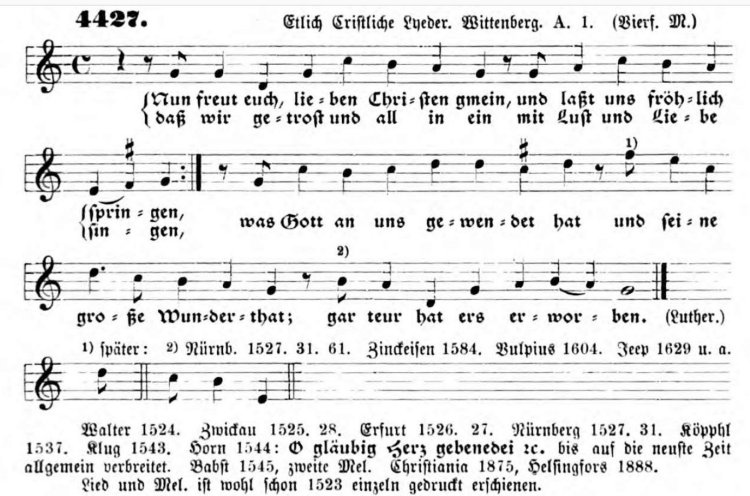 |
|
Melody 2: Nun freut euch, lieben Christen gmein (II) (Es ist gewisslich) (Zahn 4429a) | Composer: Martin Luther (?) (Wittenberg, 1529), based on a 15th century melody of secular origin |
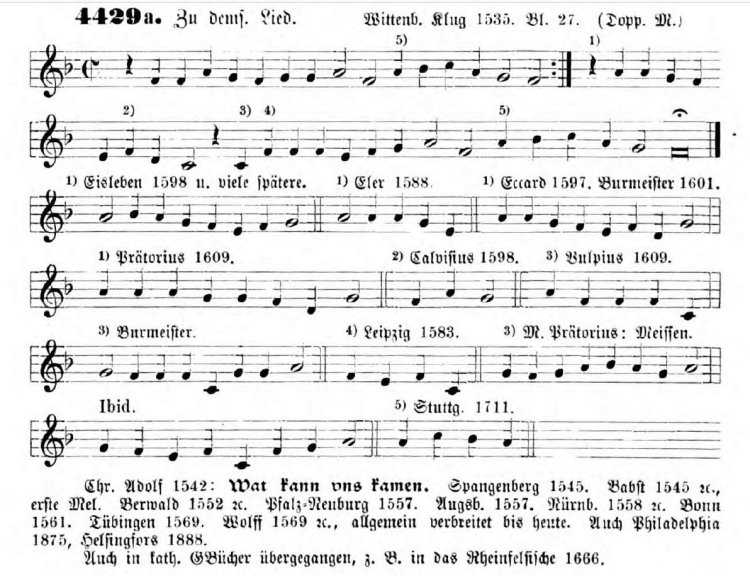 |
|
Text 1: Nun freut euch, lieben Christen gmein (NLGB 391; EG 341; Gemeindelieder 284; Jesus unsere Freude! 298; Sing mit 126; ELG 96)
Author: Martin Luther (1523) |
|
Text 2: Ich steh an deiner Krippen hier
Author: Paul Gerhardt (1653) |
|
Text 3: Es ist gewisslich an der Zeit (NLGB 232; ELG 685; EG 149)
Author: Bartholomäus Ringwaldt (c1565 / 1582 / 1586), based on an earlier Latin text |
|
Hymnal versions Bach may have known: |
|
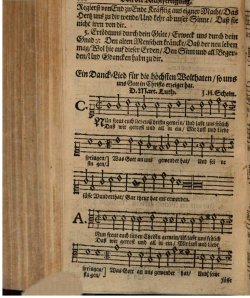
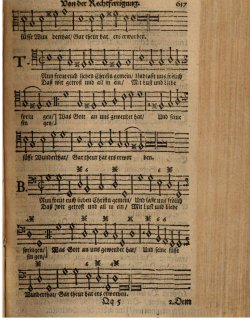
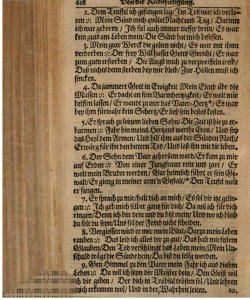
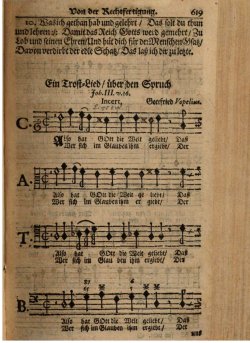
|
|
Melody I & text of Nun freut euch, lieben Christen gmein (NLGB 391) from the Neu Leipziger Gesangbuch, pp 616-619 |
|
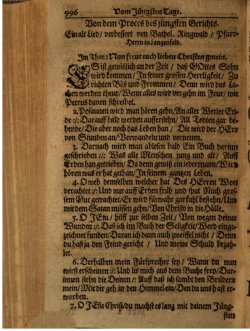
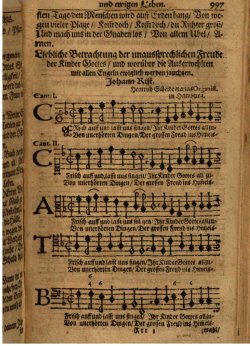
|
|
Text of Nun freut euch, lieben Christen gmein (NLGB) from the Neu Leipziger Gesangbuch, pp 996-997 |
| |
| |
|
Use of the Chorale Melody by Bach: |
|
Melody 1: |
|
Text 1: Nun freut euch, lieben Christen gmein |
|
Chorale Nun freut euch, lieben Christen gmein, BWV 388
Ref: Ri 183; Br 183; Birnstiel 188; AmB 46II p.162; Penzel 113; BC F149.1 |

 |
|
Melody 2: |
|
Text 2: Ich steh an deiner Krippen hier |
|
Chorale Ich steh an deiner Krippen hier (Mvt. 6 (59)) from Weihnachts-Oratorium BWV 248/6 (verse 1) |
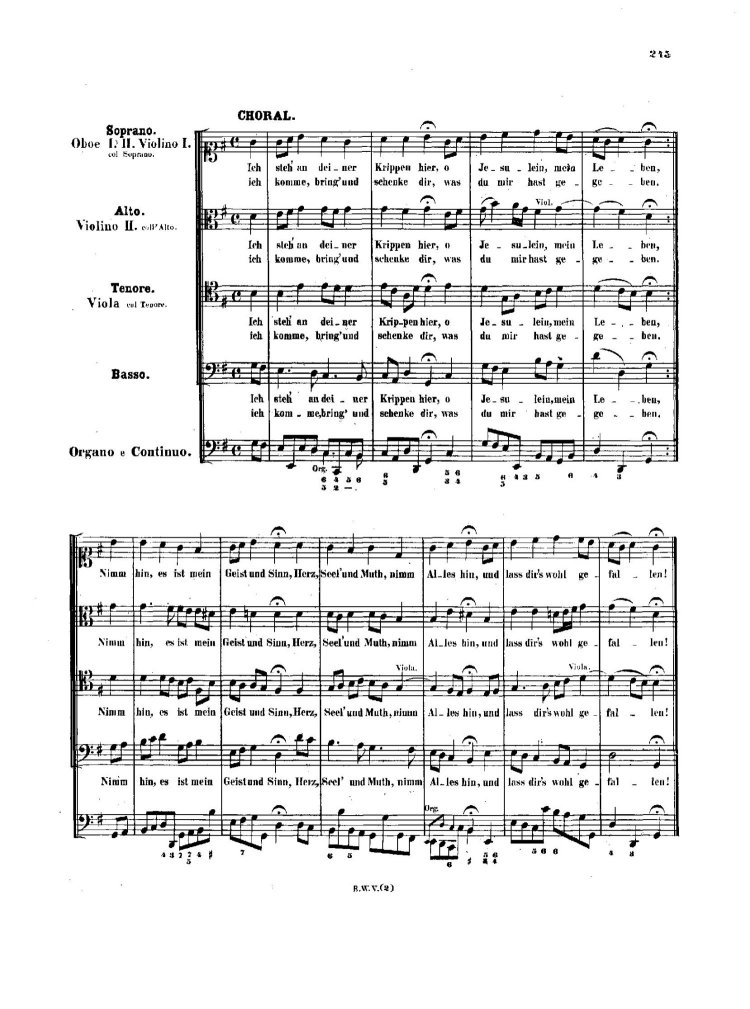 |
|
Text 3: Es ist gewisslich an der Zeit |
|
Chorale Es ist gewisslich an der Zeit, BWV 307
Ref: RE 260; Br 260; KE 262; Dietel 22; AmB 46II p.232; BGA 54; BC F150.1; CST 270 |
 |
|
Untexted: |
|
Recitative for Bass with Instrumental Chorale Ach, soll nicht dieser große Tag (Mvt. 9) from Cantata BWV 70 |
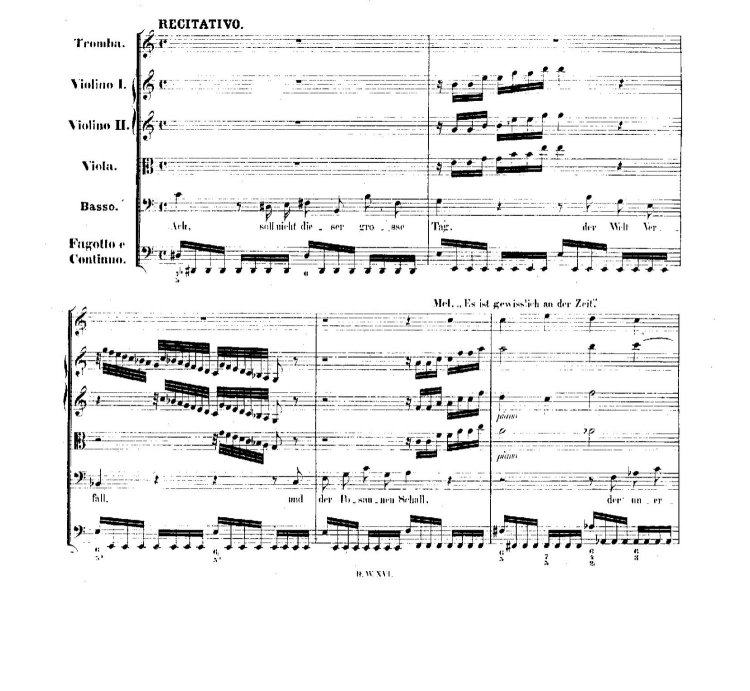
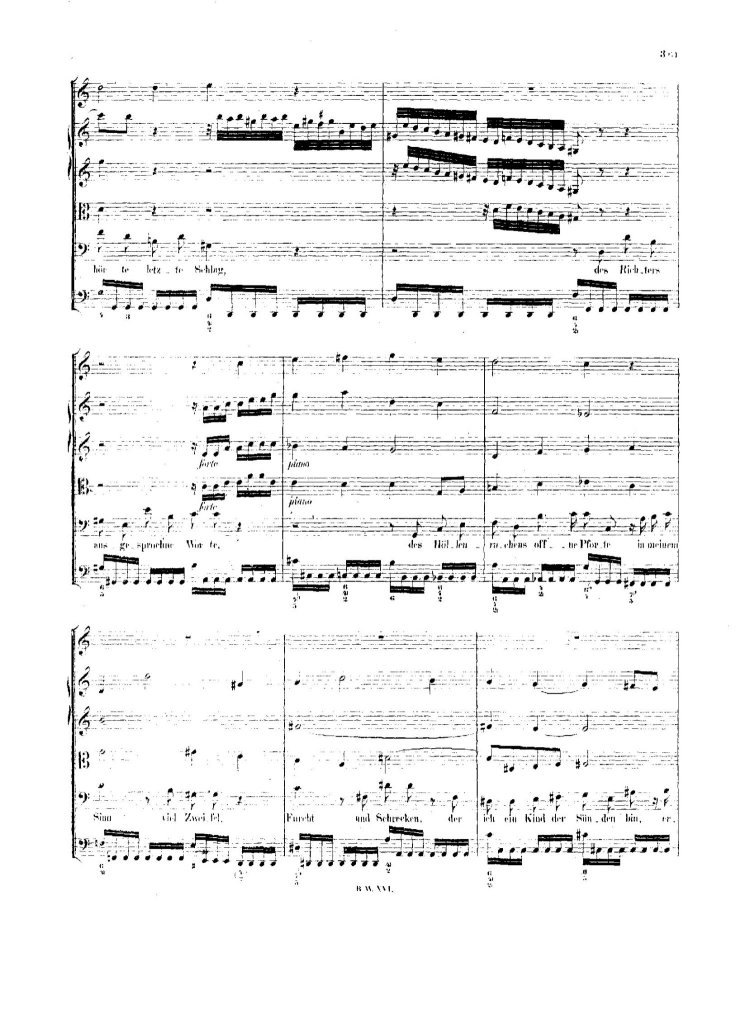
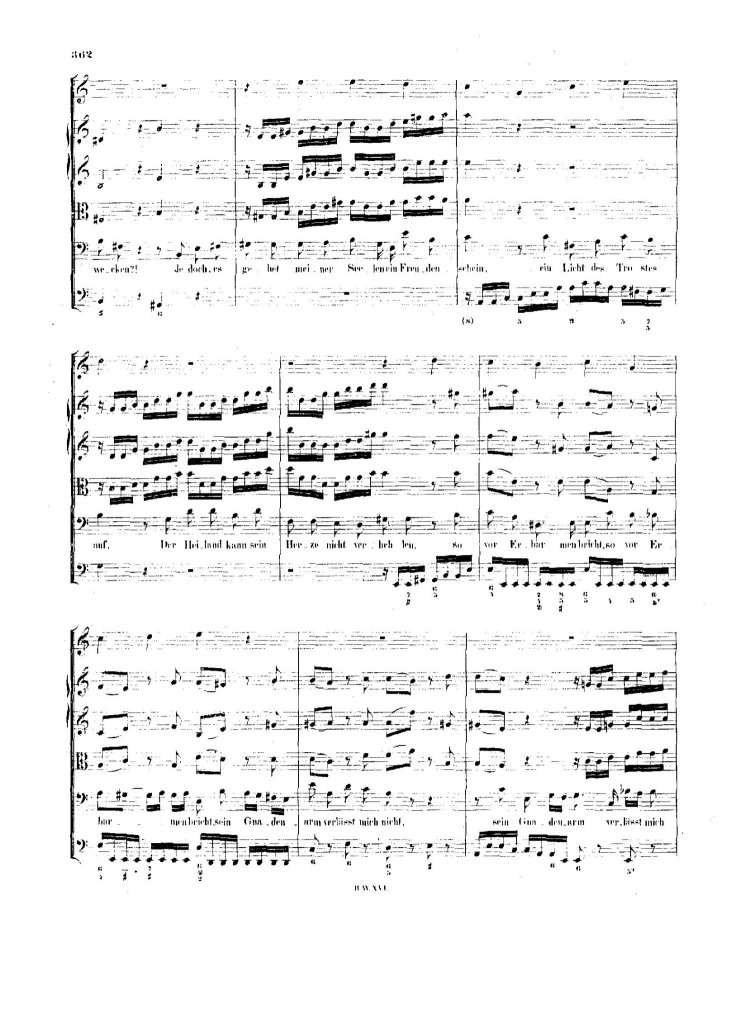
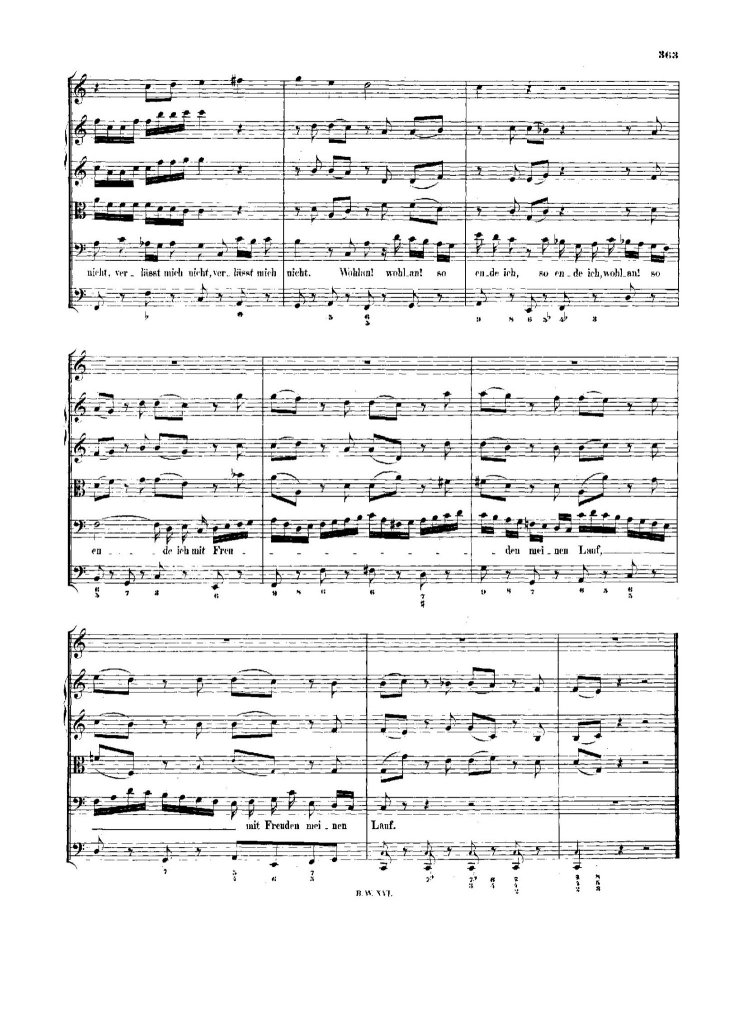 |
|
Chorale Prelude Nun freut euch, lieben Christen (I), BWV 734 |
|
Chorale Prelude Nun freut euch, lieben Christen (II), BWV 734a |
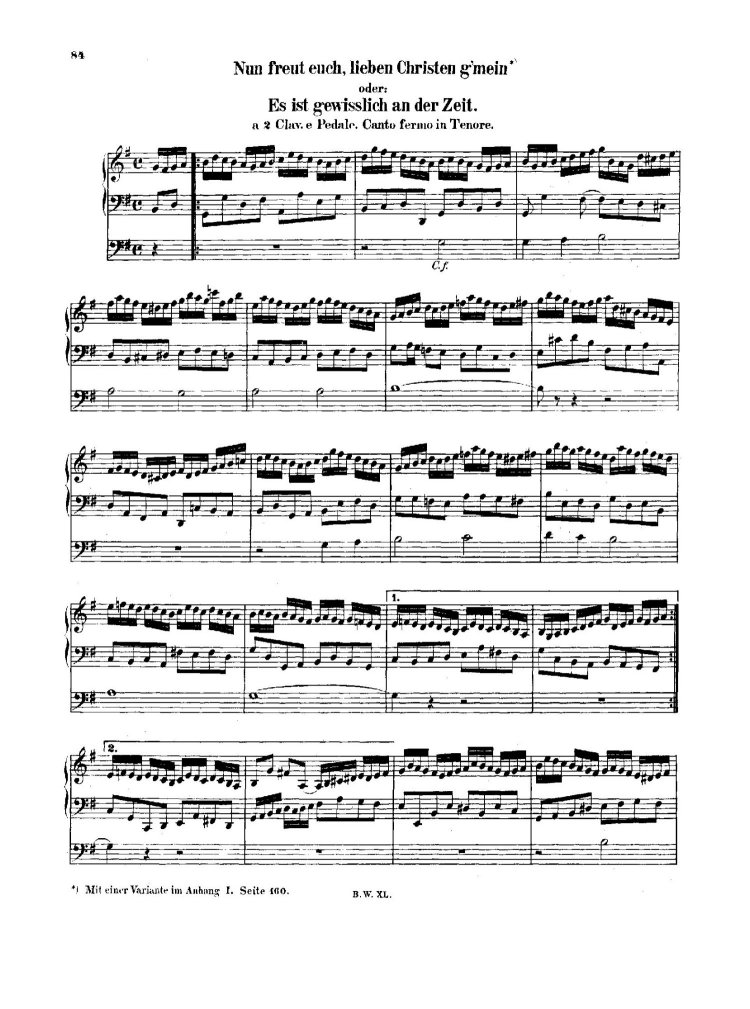
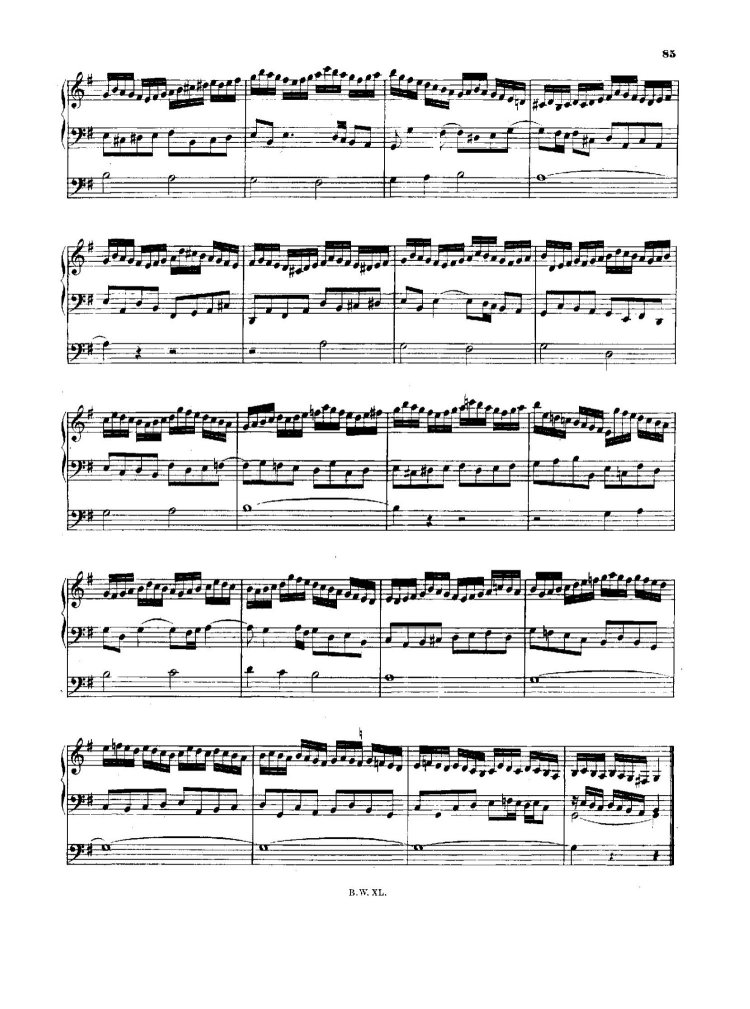 |
|
Chorale Prelude Nun freut euch, lieben Christen gmein (III), BWV 755 [Doubtful] |
|
BWV 755 was not included in the BGA. According to Malcolm Boyd: Bach, the work is not by J.S. Bach. |

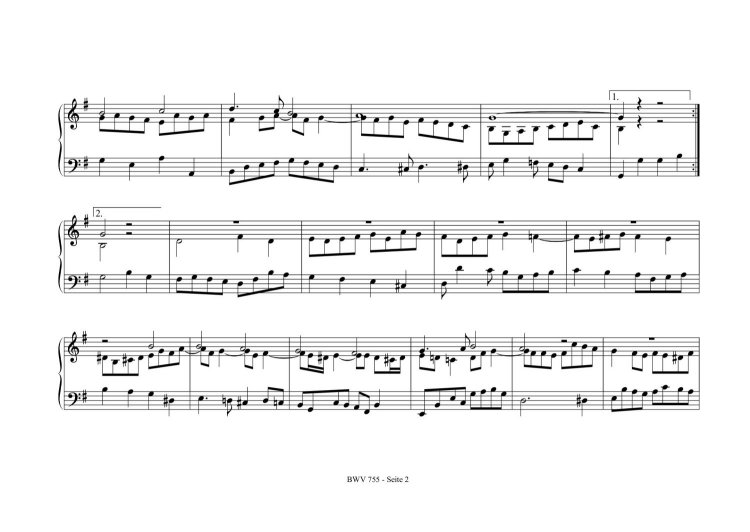
 |
| |
| |
|
Use of the Chorale Melody by other composers: |
| |
| |
|
Sources: Bach Digital; BGA; Zahn; BCML discussions on BCW; Charles Sanford Terry's Bach Chorals books
Photos from Gottfried Vopelius: Neu Leipziger Gesangbuch (Vopelius 1682) & Christian Friedrich Witt: Psalmodia Sacra, Oder: Andächtige und schöne Gesänge… (Gotha Hymnal, 1715), were taken from digital copies of the books downloaded from Bayerische Staatsbibliothek München. These copies are Out of copyright - non commercial re-use (Europeana Rights).
Prepared by Aryeh Oron (October 2018) |